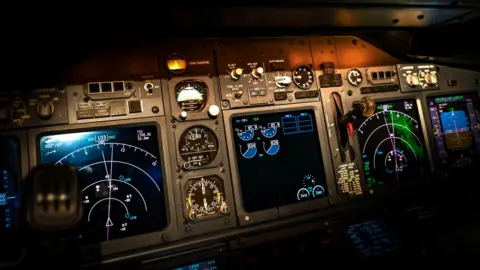The recent investigation into a crash involving Air India Flight 171 has spurred regulatory actions across various countries regarding the fuel control mechanisms on Boeing aircraft. Indian and South Korean authorities mandated inspections of these fuel control switches in their fleets. Singapore Airlines and its subsidiary, Scoot, have already completed similar inspections.
The crash, which occurred in June, prompted a preliminary report that has not yet determined the conclusive cause or responsibility for the incident. Notably, the report indicated that two critical fuel control switches on the Boeing 787 in question were positioned off mere seconds post-takeoff. This particular finding raised eyebrows since each switch features a locking mechanism designed to prevent inadvertent adjustments. Aviation experts speculate that human intervention is likely required for such a switch to be turned off unintentionally.
The findings drew attention to a longstanding advisory issued by the Federal Aviation Administration (FAA) in 2018, which recommended airlines operating Boeing models, including the 787, to inspect these fuel control switches for proper locking functions. However, Air India had reportedly not performed these inspections since they were deemed non-mandatory, and the FAA did not categorize the locking mechanism’s issues as significant safety concerns.
As aviation regulators assess the findings and responses to the crash, the underlying lessons continue to raise questions about airline safety protocols and regulatory adherence within potentially high-risk aviation operations worldwide.
The crash, which occurred in June, prompted a preliminary report that has not yet determined the conclusive cause or responsibility for the incident. Notably, the report indicated that two critical fuel control switches on the Boeing 787 in question were positioned off mere seconds post-takeoff. This particular finding raised eyebrows since each switch features a locking mechanism designed to prevent inadvertent adjustments. Aviation experts speculate that human intervention is likely required for such a switch to be turned off unintentionally.
The findings drew attention to a longstanding advisory issued by the Federal Aviation Administration (FAA) in 2018, which recommended airlines operating Boeing models, including the 787, to inspect these fuel control switches for proper locking functions. However, Air India had reportedly not performed these inspections since they were deemed non-mandatory, and the FAA did not categorize the locking mechanism’s issues as significant safety concerns.
As aviation regulators assess the findings and responses to the crash, the underlying lessons continue to raise questions about airline safety protocols and regulatory adherence within potentially high-risk aviation operations worldwide.





















